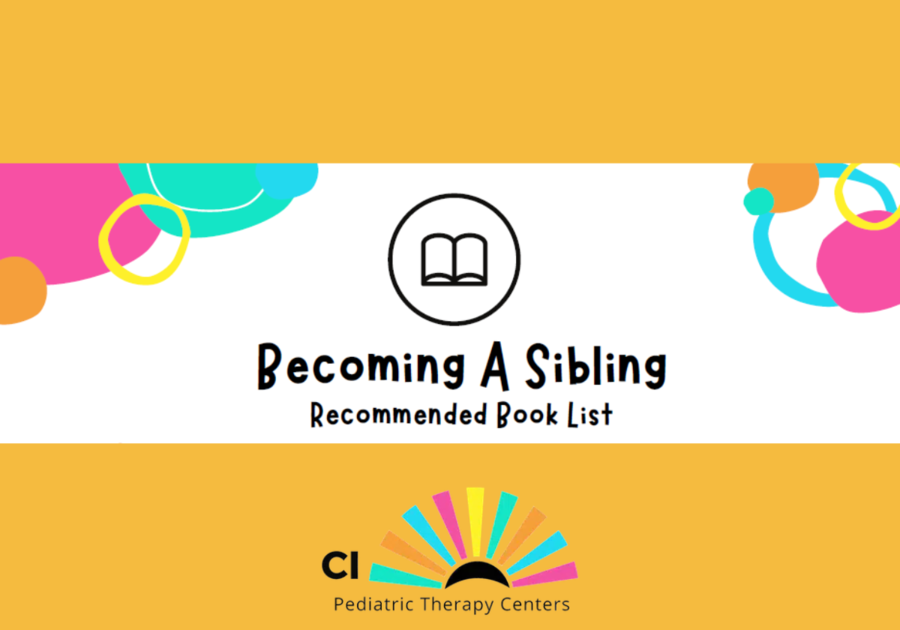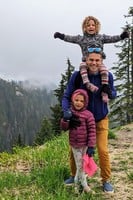There is typically lots to do to prepare your home for a new baby, but almost as important as preparing for the baby itself, is preparing the older sibling for the changes that lie ahead. We’ve gathered some of our top recommendations to help make this transition as smooth as possible for your child.
Books and Social Stories:
There are countless books available about becoming an older sibling. Check out our recommended book list. Consider checking your local public library for these books and more. Reading books can help foreshadow what to expect and open up a dialog for the child to ask questions.
For many of the clients we treat, social stories can be a very powerful tool to help foreshadow an upcoming change. Social stories are a social learning tool, often used by speech and language pathologists and occupational therapists, that help facilitate the exchange of information from adults to children, written from the perspective of the child (Kuoch, 2003). If your child works with one of these therapists, they can help develop a story tailored to your family to help foreshadow the change, how it might make them feel and suggested coping strategies.
Pretend Play:
Encourage your child to play with a doll! Pretend play can be a great way for kids to learn about something new. Focus on ways your child can help with the new baby! Can they bring a diaper? Help feed? Help bring the baby a comfort item? Play is a great time to introduce vocabulary and important skills like using gentle hands.
Set a Cool-Down Plan:
Set up a plan for your child for times they become overwhelmed with the baby. "When the baby is crying, you can XYZ". Consider things like playing with a special new toy in their room, listening to music with headphones, asking mom or dad for help, etc. Consider making a visual menu of choices that they can select from in those moments. Role play how to respond in those moments. When a child is dysregulated, it is harder for them to think clearly, so the more you have practiced it when they are well-regulated, the more likely they will be able to tap into those ideas when they are upset.
Make Changes Early:
Will your child need to change positions in the car? Swap or share a room? Will room configurations change with new baby gear? Making these changes ahead of time can help make the transition of a new baby coming home less overwhelming, since changes have happened gradually.
Make the Baby More Relatable:
Talk about when they were a baby! Lots of kids love to see photos of themselves as babies and can relate to the baby by relating to stories they've heard about themselves. Consider digging out old baby photos of yourself and having grandparents share stories from when you were a baby.
Schedule Special 1:1 Time:
Consider scheduling special 1:1 time for your current kiddo and each parent before and after the new baby arrives! All the attention on the baby can cause for some big feelings for the older sibling. Make sure they are still getting those special 1:1 moments with each parent.
You’ve got this! Be sure to give yourself some grace. Change always comes with challenges, but you are stronger than you know!
Looking For More?
Consider checking out CI Pediatric Therapy Centers’ free weekly drop in birth-to-3 playgroups. Lots of young kiddos who are new to being big siblings (and their brand-new siblings) regularly attend playgroup, so it’s a great chance to meet other families going through a similar phase of life! Visit our website to learn more and confirm the current schedule https://www.citherapies.com/resources/
If your child is having significant difficulty with emotional regulation, including after the addition of a new sibling, an occupational therapist may be able to help. Visit https://www.citherapies.com/our-services/occupational-therapy/ to find out more about occupational therapy and how it might help!
Sources:
- Scattone D, Tingstrom DH, Wilczynski SM. Increasing Appropriate Social Interactions of Children With Autism Spectrum Disorders Using Social StoriesTM. Focus on Autism and Other Developmental Disabilities. 2006;21(4):211-222. doi:10.1177/10883576060210040201
- Gray, C.A. , & Garand, J.D. (1993). Social Stories: Improving responses of students with autism with accurate social information. Focus on Autistic Behavior, 8, 1—10.
- Kuoch, H. , & Mirenda, P. (2003). Social Story interventions for young children with autism spectrum disorders. Focus on Autism and Other Developmental Disabilities, 18, 219—227.



